14 Plants for an Office With No Windows
Posted by Jason Wyrwicz on Apr 10th 2024
For many office workers, the daily grind takes place under the constant hum of fluorescent lights, far removed from the natural world. Windowless offices, while offering benefits like noise reduction and temperature control, can feel sterile and lack the invigorating touch of greenery. Luckily, even the most light-deprived workspaces can be transformed into vibrant oases with the right selection of low-light plants.
In this guide, we’ll explore the best plant options for an office with no windows. Let’s discover their unique characteristics, care requirements, and the benefits they bring to the workplace environment.
List of Best Plants for a Windowless Office
- Snake Plant (Sansevieria trifasciata)
- ZZ Plant (Zamioculcas zamiifolia)
- Peace Lily (Spathiphyllum wallisii)
- Chinese Evergreen (Aglaonema)
- Pothos (Epipremnum aureum)
- Cast Iron Plant (Aspidistra elatior)
- Air Plants (Tillandsia)
- Bromeliads (Bromeliaceae)
- English Ivy (Hedera helix)
- Bird's Nest Fern (Asplenium nidus)
- Lady Palm (Rhapis excelsa)
- Corn Plant (Dracaena fragrans)
- Dumb Cane (Dieffenbachia spp.)
- Philodendron (Philodendron spp.)
14 Plants for an Office With No Windows

Several plant species have adapted to thrive in environments with minimal natural light. These 14 botanical superstars not only tolerate low light but also offer a range of aesthetic and practical benefits:
1. Snake Plant (Sansevieria trifasciata)
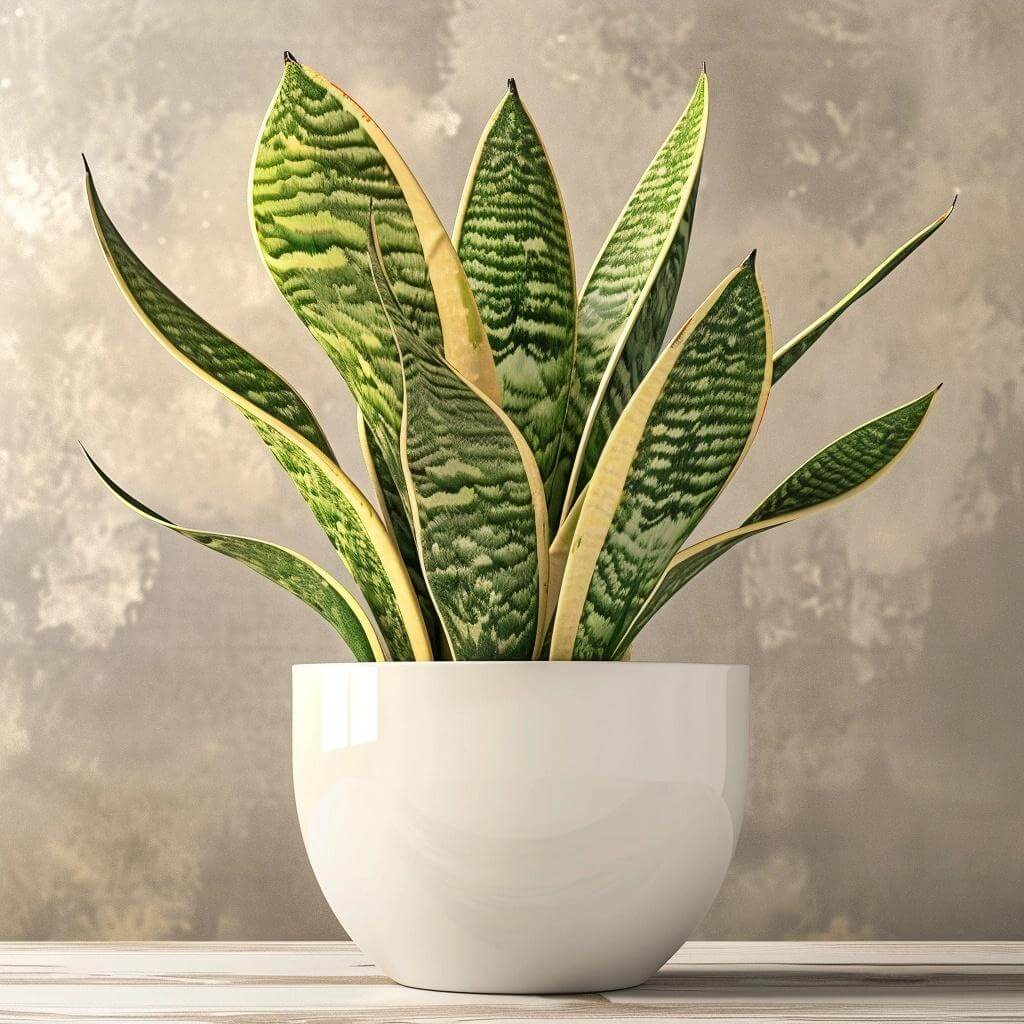
A near-mythical symbol of resilience, the snake plant boasts upright, sword-like leaves that can grow up to 8 feet tall in ideal conditions.
These leaves come in a variety of shades and patterns, ranging from solid dark green to variegated with yellow or white stripes.
Snake plants require minimal watering, perhaps only once a month, and are nearly impossible to kill due to their succulent-like leaves that store water.
This makes them perfect for forgetful plant parents or offices with inconsistent watering routines.
For a modern touch, consider placing your snake plant in a tall planter to showcase its architectural form.
2. ZZ Plant (Zamioculcas zamiifolia)
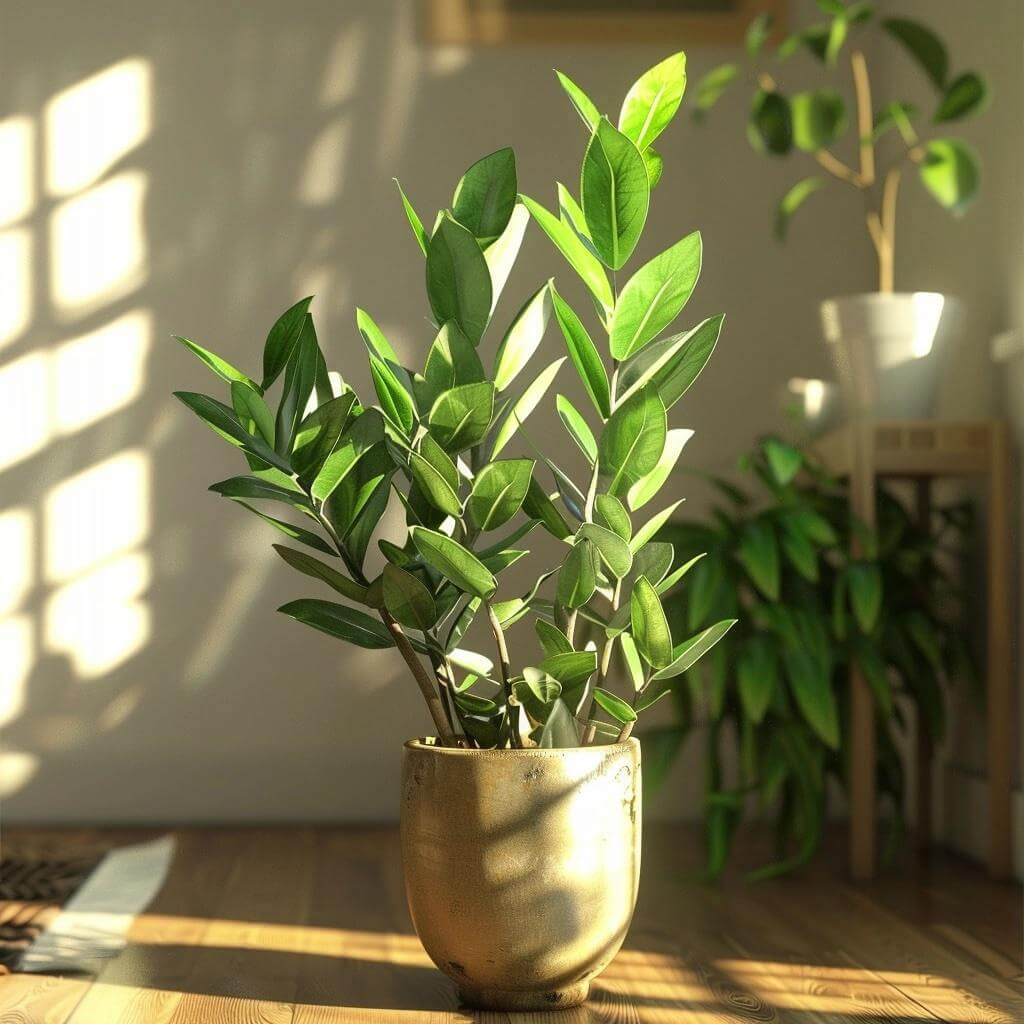
This low-maintenance wonder features glossy, dark green leaves that can grow up to 3 feet tall and emerge from an underground rhizome.
ZZ plants tolerate neglect and infrequent watering, making them ideal for busy work environments.
They can survive in very low light conditions and don't require frequent repotting. The ZZ plant's slow growth habit also makes it a manageable choice for smaller office spaces.
3. Peace Lily (Spathiphyllum wallisii)
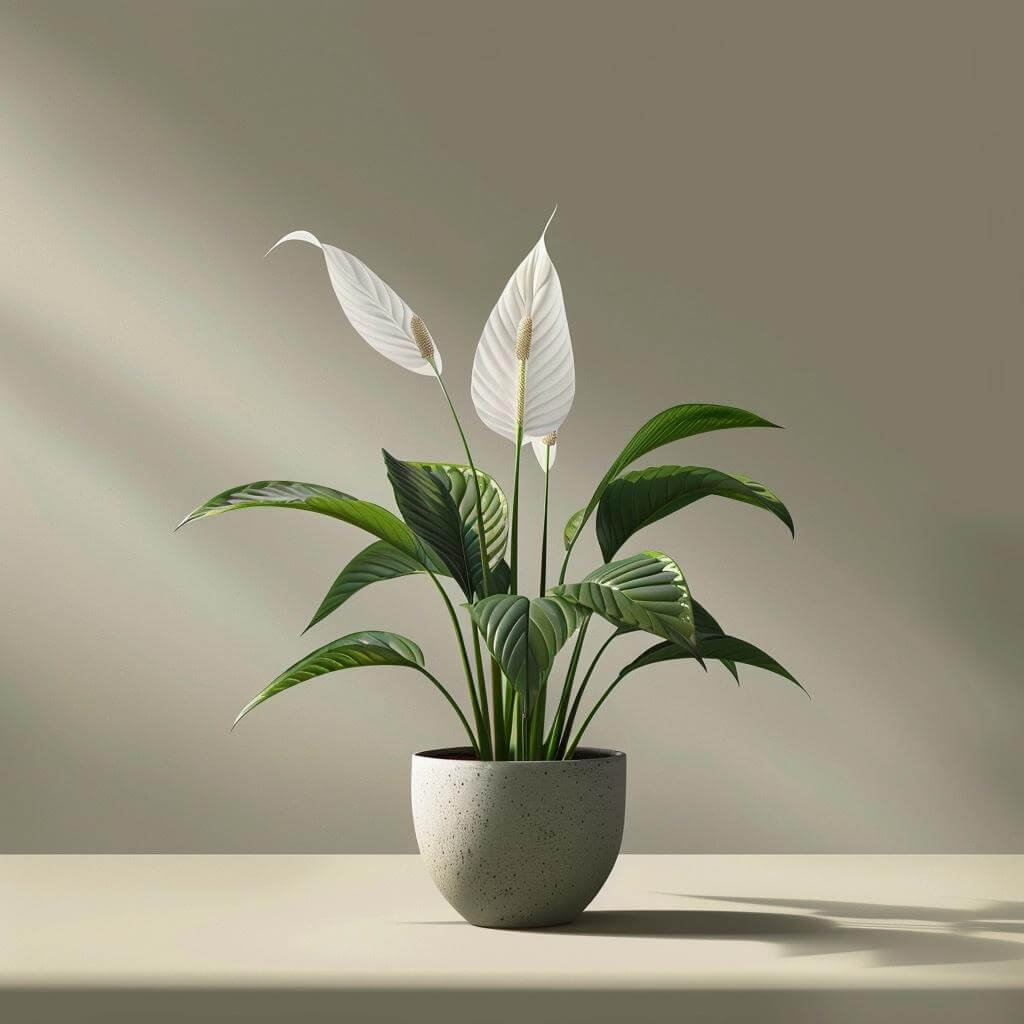
Known for its air-purifying properties, the peace lily boasts beautiful white, trumpet-shaped flowers that rise above lush, deep green foliage.
Peace lilies prefer brighter indirect light compared to some other low-light plants, but they will tolerate lower light conditions as well.
They thrive in moderately moist soil and will even droop dramatically when thirsty, acting as a built-in watering reminder for forgetful caregivers.
As peace lilies appreciate consistent moisture, choose a pot with drainage holes. Consider a decorative yet durable planter like Edgewood Fluted Planter Pot to elevate the peace lily and showcase its beautiful blooms.
4. Chinese Evergreen (Aglaonema)
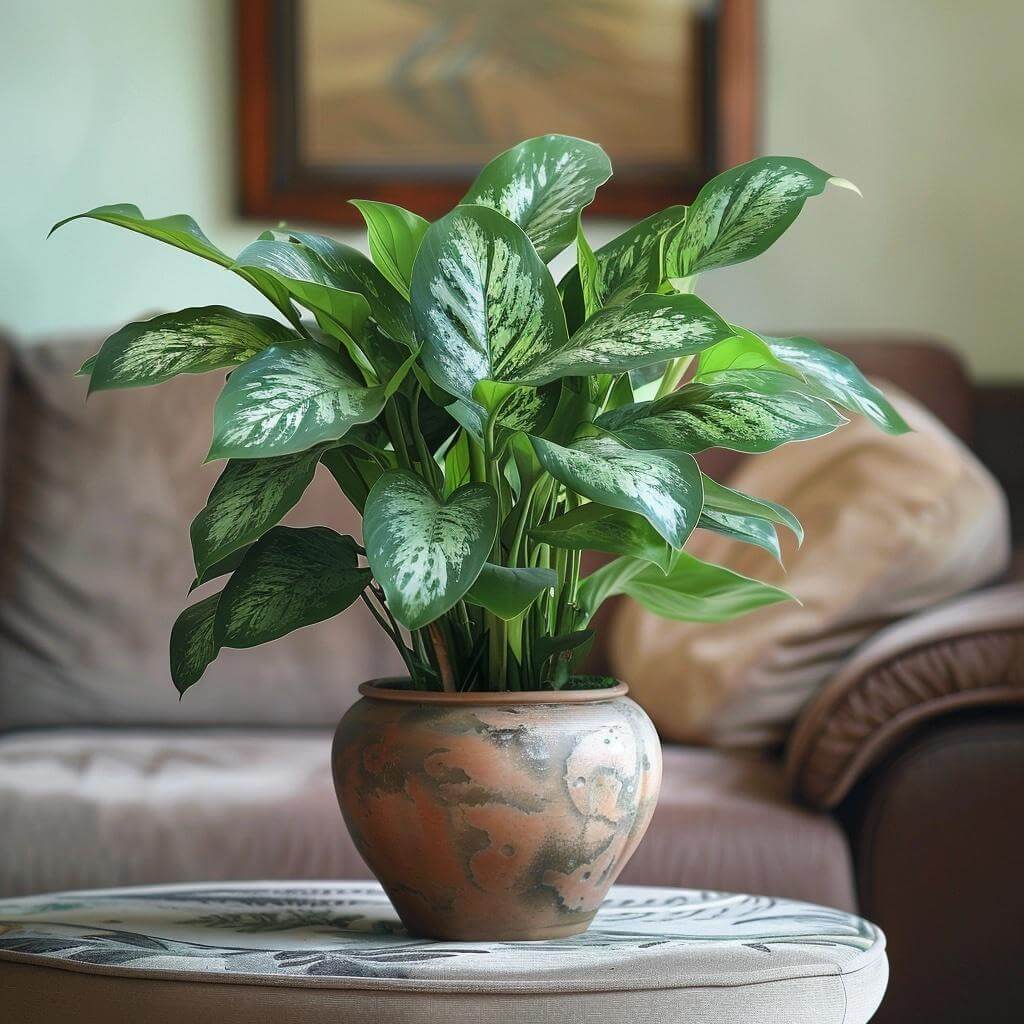
This versatile plant comes in a wide variety of foliage colors and patterns, adding a pop of vibrancy to even the dullest corner.
Chinese evergreens come in a range of sizes, from dwarf varieties that stay under a foot tall to larger types that can reach several feet in height.
They are tolerant of low light and humidity, making them perfect for most office settings. The Chinese evergreen's air-purifying properties are another bonus for the office environment.
5. Pothos (Epipremnum aureum)
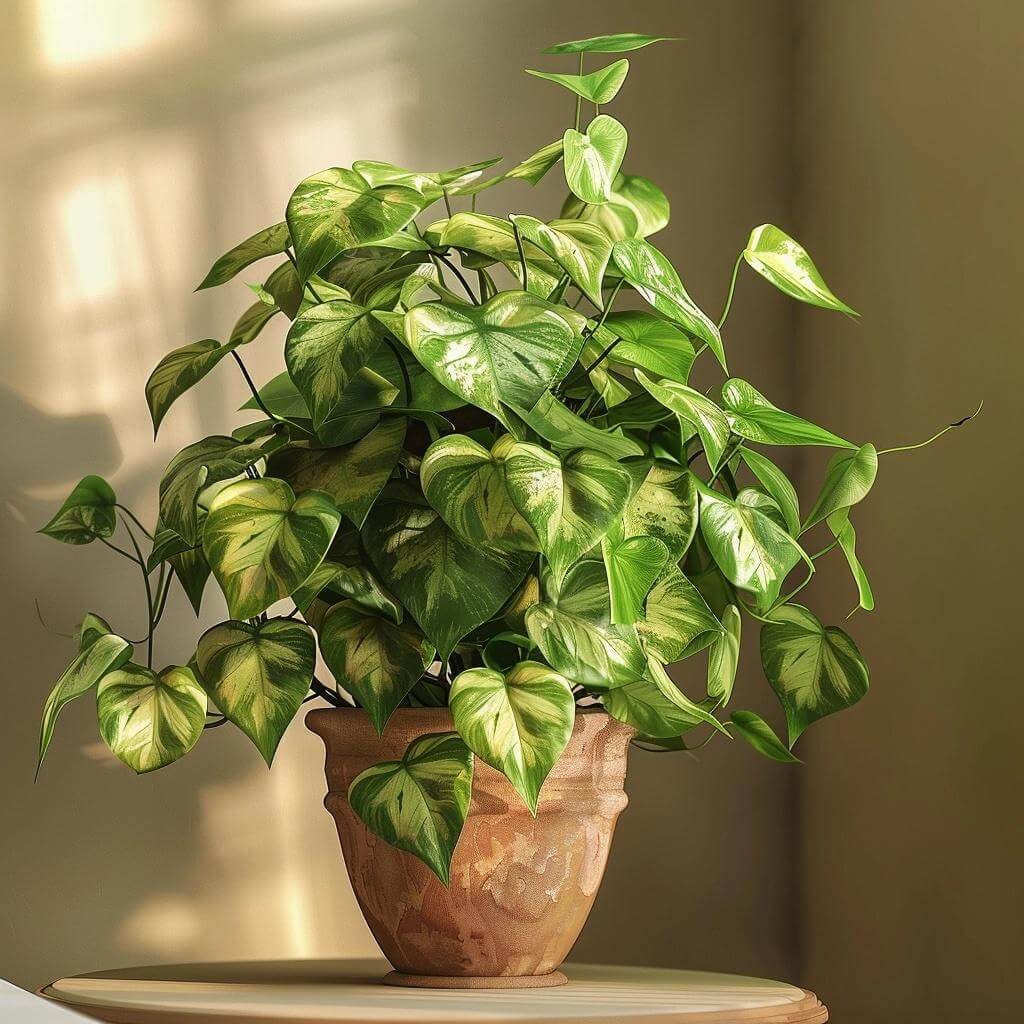
A cascading vine with lush, heart-shaped leaves, pothos is a popular choice for offices with hanging planters or shelves.
Pothos vines can grow several feet long and come in a variety of variegations, including green and white, green and gold, and even all-white for a particularly bright touch.
Pothos thrives in low light and is known for its ability to propagate easily from stem cuttings, allowing you to create a mini jungle in your office or share cuttings with colleagues.
The best way to showcase pothos’ cascading vines is to train it to climb a moss pole placed in a sturdy indoor planter for a unique look.
6. Cast Iron Plant (Aspidistra elatior)
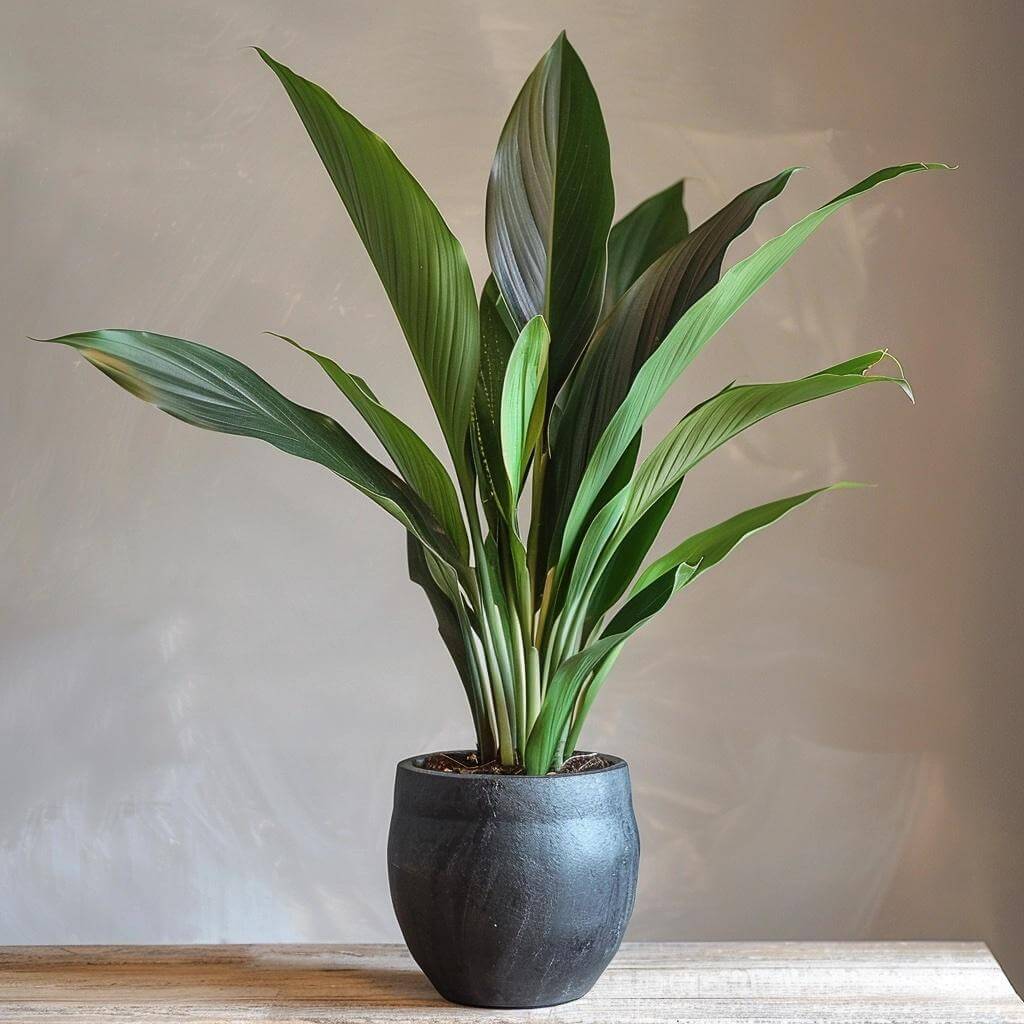
Living up to its name, the cast iron plant is renowned for its toughness. It thrives in low light and infrequent watering, making it ideal for offices where plant care might be sporadic.
The cast iron plant's broad, dark green leaves can grow up to 3 feet tall and add a touch of sophistication to any desk or conference table.
While slow-growing, a well-cared-for cast iron plant can live for decades, making it a long-term investment in your office greenery.
7. Air Plants (Tillandsia)
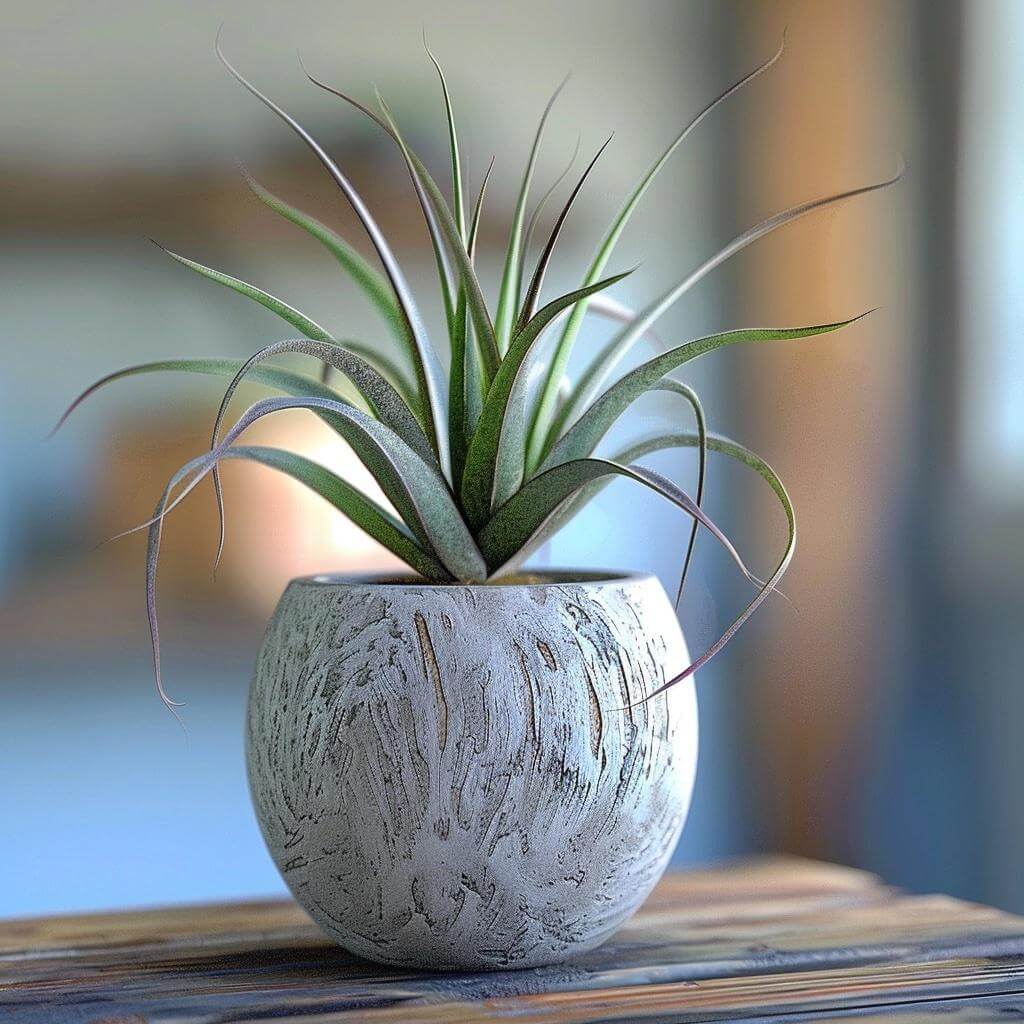
These unique epiphytes require no soil and absorb moisture and nutrients from the air.
Air plants come in a variety of shapes and sizes, with spiky varieties like Tillandsia ionantha or the whimsical Tillandsia xerographica with its silvery curls.
They can be displayed in decorative terrariums or mounted on driftwood for a touch of modern flair.
8. Bromeliads (Bromeliaceae)
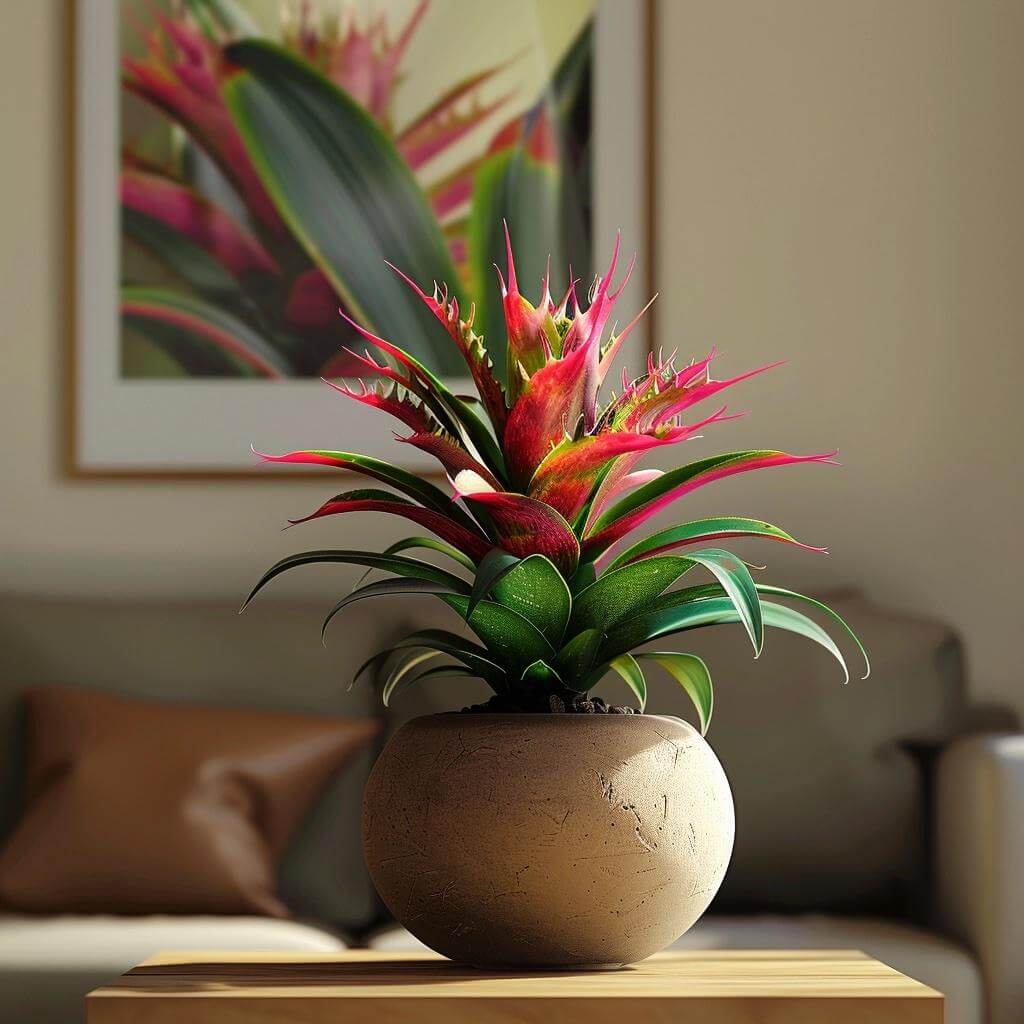
These colorful tropical plants have vibrant flowers and air-purifying properties. While some require slightly more light, there are low-light varieties available, like the guzmania with its showy red or pink bracts or the cryptanthus, a low-growing bromeliad with interesting variegated foliage in shades of green, purple, and silver.
Due to its intricate form, cryptanthus will look stunning in a bowl-like planter, such as Short Hayden Tabletop Planter Pot, that will highlight its unique foliage. All Bromeliads prefer moderately moist soil and high humidity, so misting them regularly or placing them on a pebble tray filled with water can be beneficial.
9. English Ivy (Hedera helix)
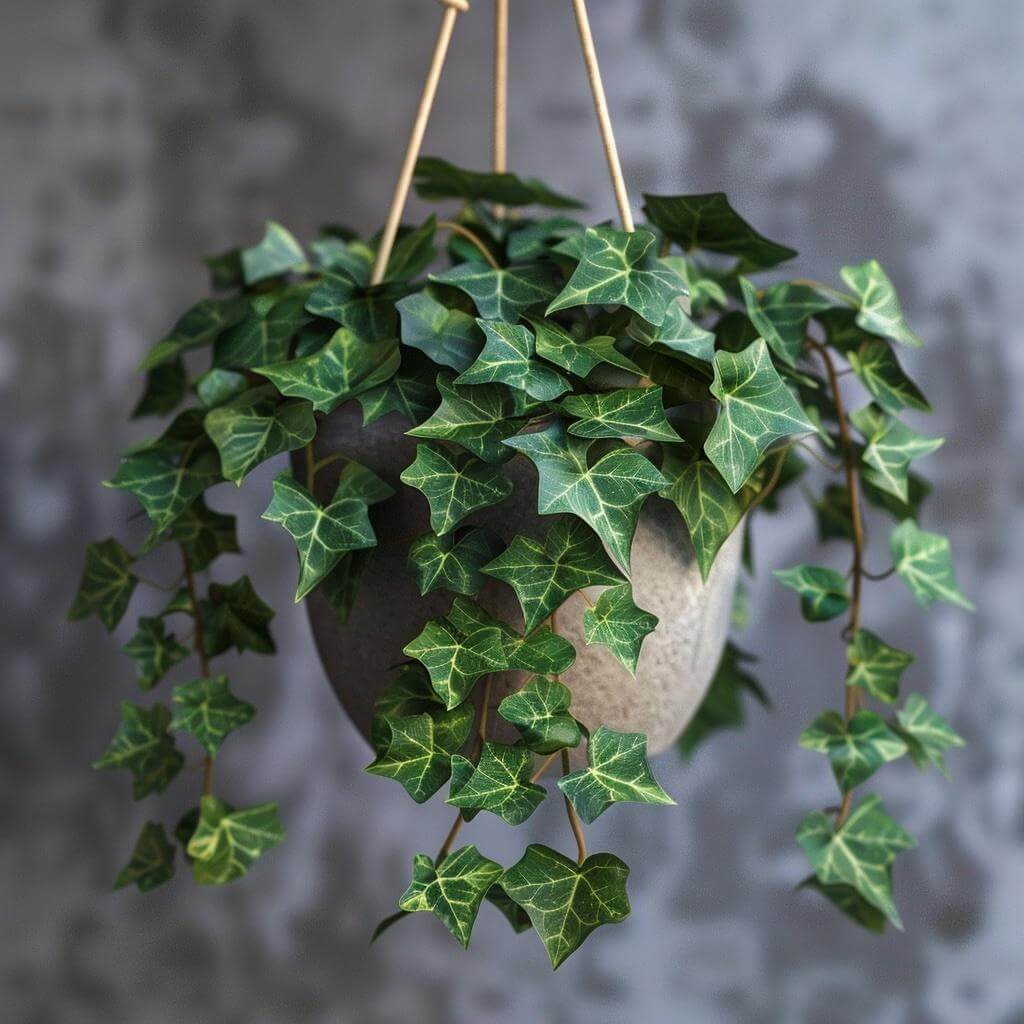
A classic trailing vine, English ivy thrives in low light and can be trained to climb walls or shelves, adding a touch of greenery to vertical spaces.
English ivy comes in a variety of leaf shapes and variegations, including the classic green foliage and variegated options with white or cream markings. However, be aware that English ivy can be toxic to pets if ingested, so keep it out of reach in offices with furry companions.
10. Bird's Nest Fern (Asplenium nidus)
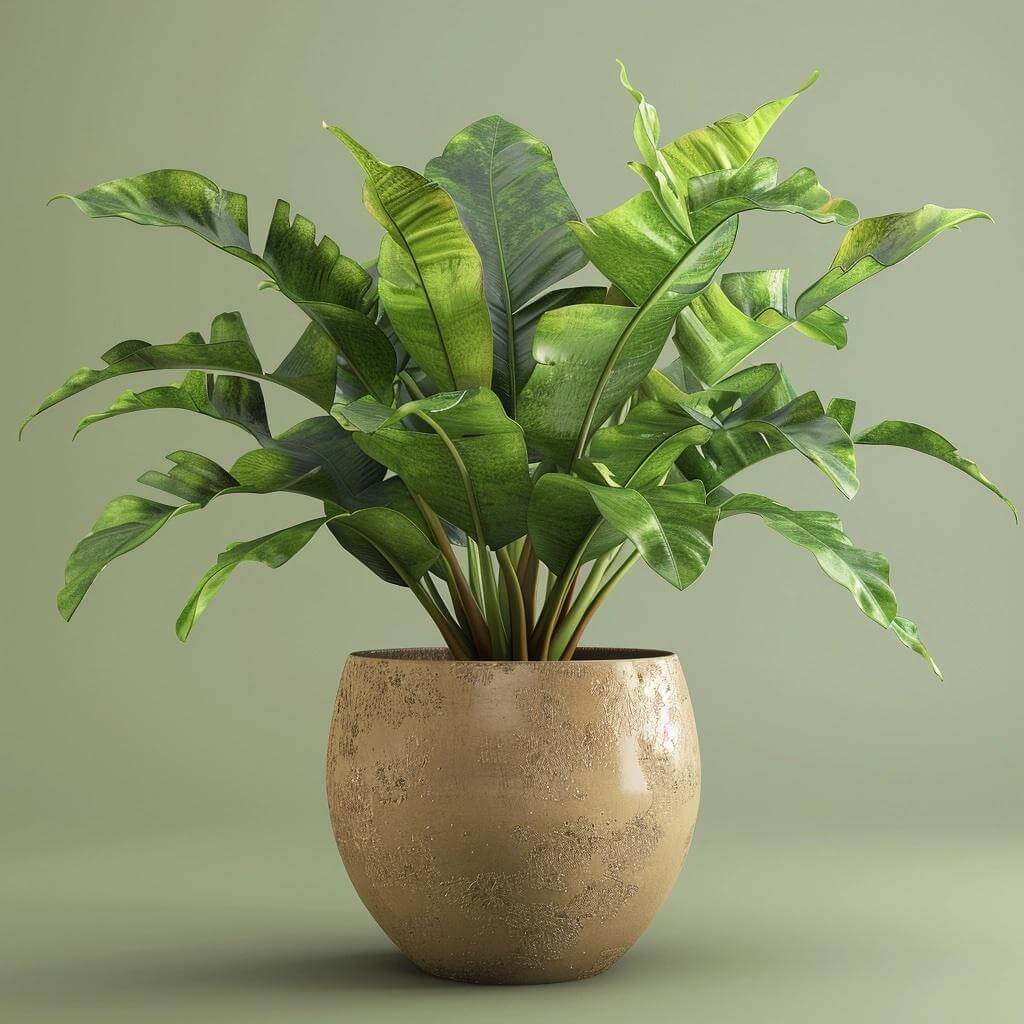
This architectural fern features broad, glossy fronds that unfurl from a central rosette, resembling a bird's nest. Bird's nest ferns prefer moist environments, so misting them regularly is beneficial.
They come in a range of sizes, with some varieties reaching up to 2 feet wide. Bird's nest ferns look exceptional in planters that complement their architectural form.
Choose a sturdy long planter that will be ideal to accommodate the fern's spreading growth.
11. Lady Palm (Rhapis excelsa)
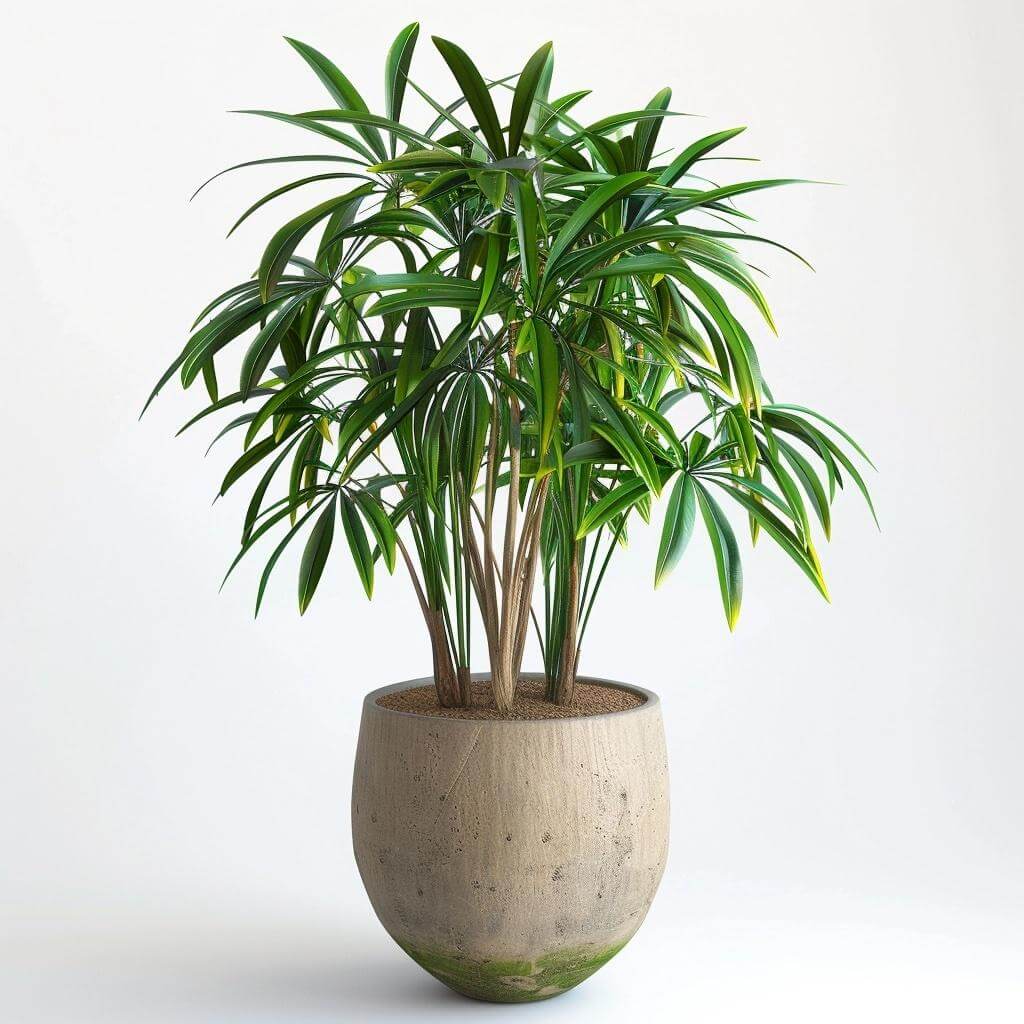
For a touch of elegance, the lady palm offers a clumping growth habit with feathery fronds emerging from a bamboo-like cane. Lady palms tolerate low light conditions and prefer evenly moist soil.
They are slow-growing but can reach up to 6 feet tall in ideal conditions, making them a stately addition to a corner office or conference room.
Lady palms thrive in large planters with drainage holes. A durable and classy Rio Grande Cylinder Planter will add a touch of sophistication to this elegant plant.
12. Corn Plant (Dracaena fragrans)
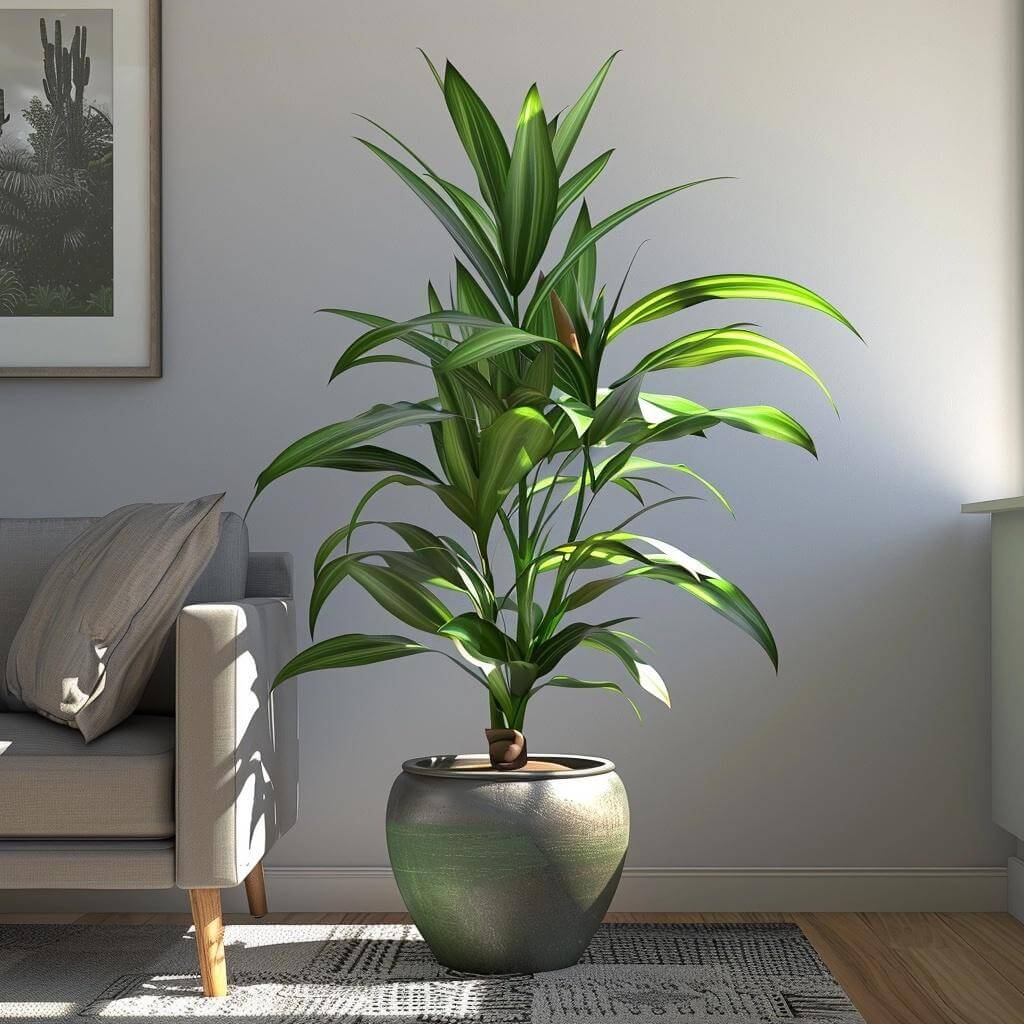
This versatile plant features long, slender leaves that come in a variety of colors, including solid green, variegated green and white, and even tri-colored varieties with the addition of yellow stripes.
Corn plants tolerate low light but will grow fuller and faster in bright indirect light. They prefer well-draining soil that dries out slightly between waterings.
13. Dumb Cane (Dieffenbachia spp.)
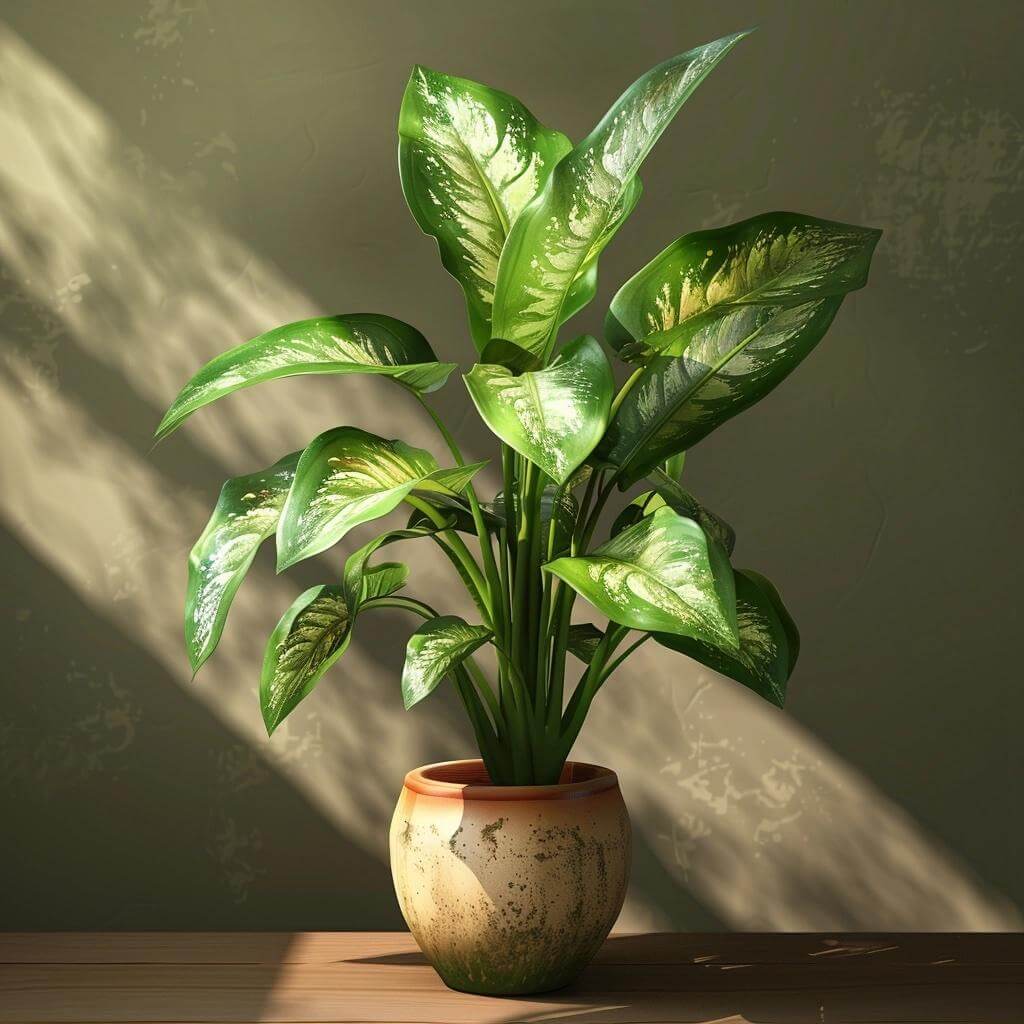
While some Dieffenbachia varieties require more light, the D. ‘Seguine’ (spotted dumb cane) tolerates lower light conditions well.
This tropical plant features large, variegated leaves with creamy white markings on a deep green background. Be aware that dumb canes are toxic if ingested, so keep them out of reach of pets and children.
14. Philodendron (Philodendron spp.)
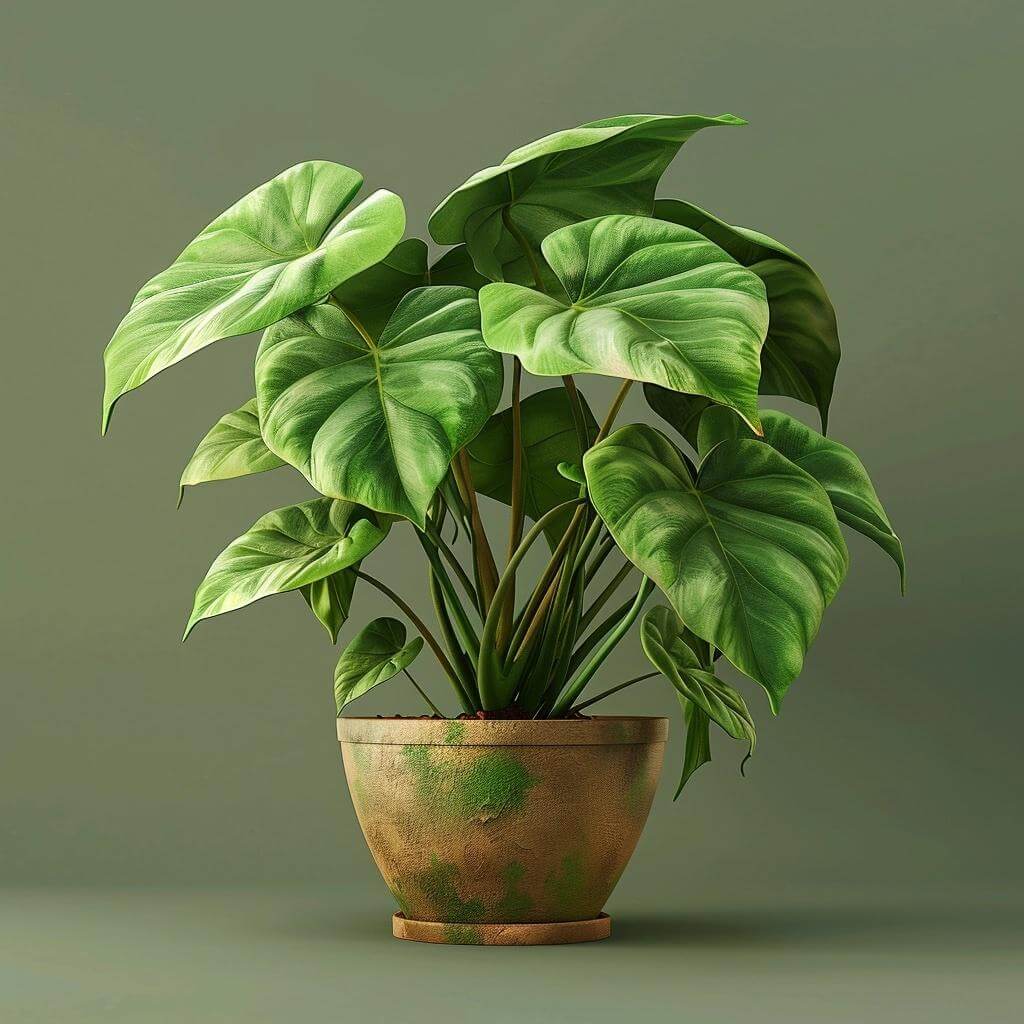
This large genus offers a variety of low-light tolerant choices for the office.
The heart-shaped leaves of the Philodendron cordatum (heart-leaf philodendron) or the split leaves of the Philodendron bipinnatifidum (lobed philodendron) add a touch of the tropics to any space.
Philodendrons prefer well-draining soil that stays consistently moist but not soggy.
The Benefits of Having Plants in an Office
The advantages of incorporating plants into the office extend far beyond aesthetics. Studies have shown that plants in the workplace can significantly improve the office atmosphere because:
- They enhance air quality. Many plants act as natural air purifiers, removing toxins and pollutants from the indoor environment. This can lead to improved respiratory health and reduced allergy symptoms for employees.
- They boost mood and reduce stress. Studies have shown that exposure to nature, even in the form of indoor plants, can have a positive impact on mood and reduce stress levels. The act of caring for plants can also be a calming and therapeutic activity.
- They increase productivity. Research suggests that offices with plants can lead to increased employee productivity and creativity. The presence of greenery can create a more calming and focused work environment.
- They elevate employee well-being. Bringing plants into the office demonstrates a commitment to employee well-being and can create a more positive and welcoming work environment.
Things to Consider When Selecting Plants for a Windowless Office
When choosing plants for your office with no windows, consider these factors:
- Light levels: While the plants mentioned earlier are tolerant of low light, some have slightly different needs. Snake plants and ZZ plants can handle near darkness, while peace lilies and Chinese evergreens prefer brighter indirect light, which might be available near artificial light sources.
- Office layout and size: For larger offices, consider placing taller plants like snake plants or parlor palms on the floor to create a sense of verticality. Smaller plants like peperomia or ferns can brighten up desks or conference tables. Hanging baskets overflowing with pothos vines add a touch of whimsy and soften harsh corners.
- Maintenance needs: Busy offices might benefit from low-maintenance plants like ZZ plants or snake plants. If someone is dedicated to plant care, a peace lily or a prayer plant could add a touch of elegance.
- Personal preferences: Ultimately, choose plants that appeal to you and your colleagues. A variety of textures, colors, and foliage shapes can create a visually interesting and stimulating environment.
Tips to Keep Plants Thriving in the Windowless Workspace
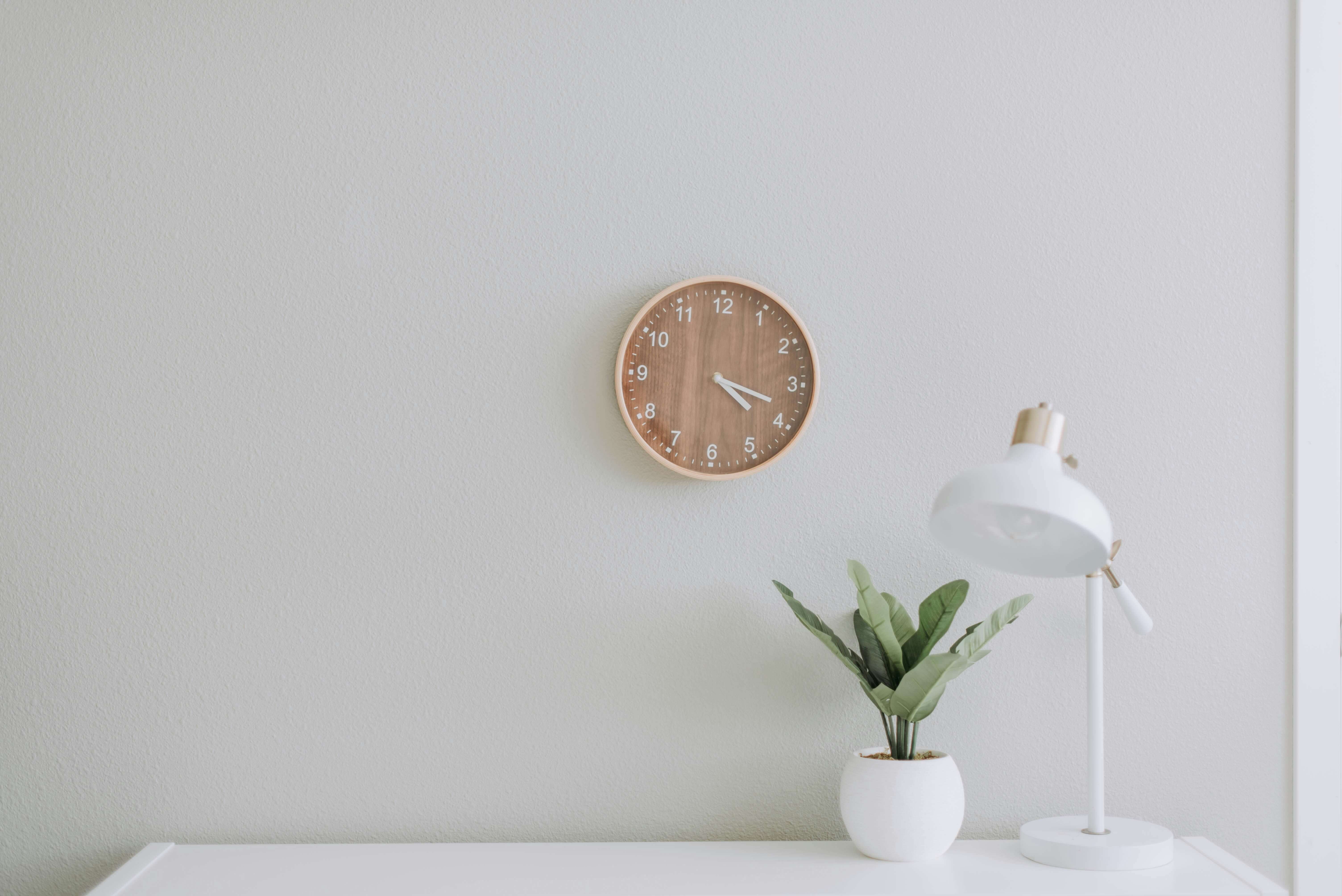
While the plants mentioned above can tolerate low light, there are steps you can take to further enhance their well-being in a windowless office:
- Rotate plants regularly: Even with minimal light, it's important to rotate plants occasionally to ensure even growth. A simple quarter-turn every few weeks will do the trick.
- Supplement with artificial light: If possible, consider using grow lights specifically designed for indoor plants. These lights mimic natural sunlight and can significantly boost plant growth, especially during the darker winter months.
- Maintain consistent moisture: Although most low-light plants require infrequent watering, underwatering can still be detrimental. Feel the soil regularly and water only when the top inch is dry.
- Group plants together: Grouping plants together helps create a microclimate with increased humidity, which is beneficial for many low-light species.
- Choose the right pot size: A pot that is too large can lead to root rot, so opt for a pot that is only slightly larger than the root ball of the plant.
The Bottom Line
Windowless offices may lack natural light, but that doesn't have to mean a lack of life. By embracing the power of resilient, low-light plants, you can transform your workspace into a thriving plant haven.
With a little planning and the right plant selections, you can cultivate a vibrant environment that benefits both your employees and the environment.
Ready to transform your office into a calming green oasis? Explore the vast selection of stylish and functional planters available at Pots, Planters & More.
Whether you prefer sleek ceramic, modern metal, or even convenient self-watering options, there's a perfect vessel waiting to complement your office aesthetic. Browse our offer and make a good choice for your office!